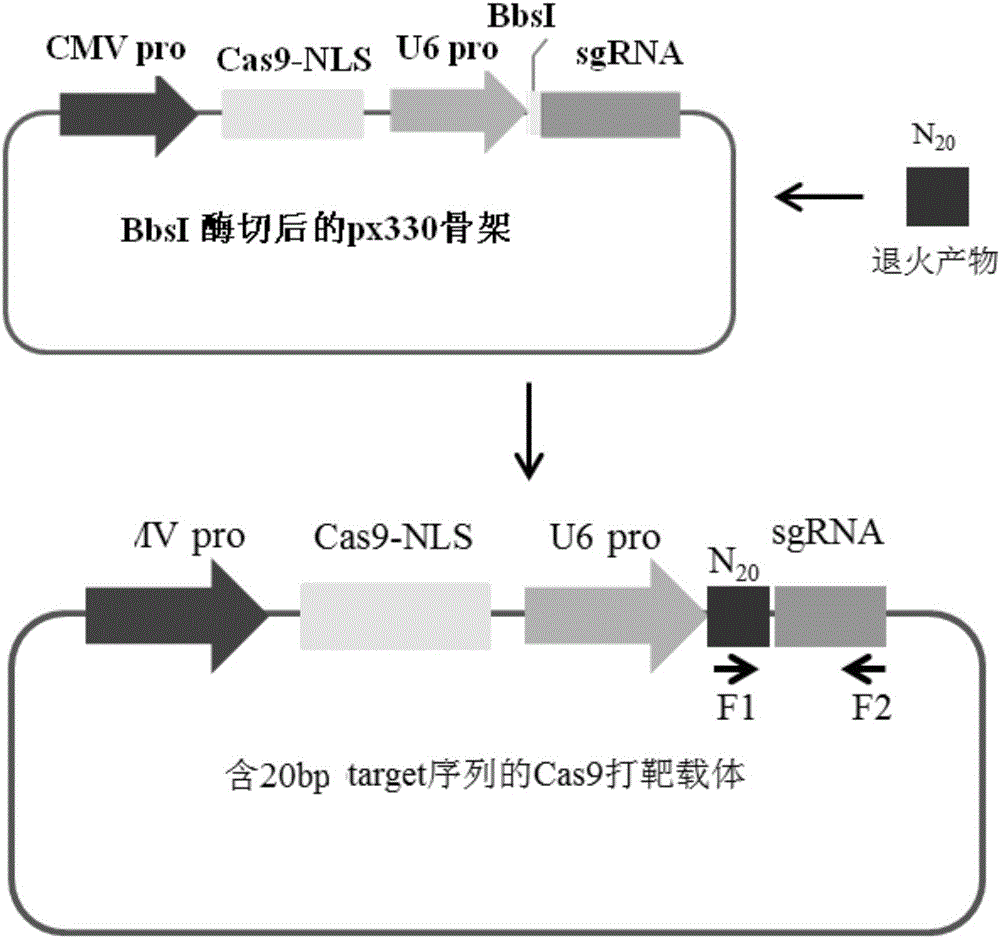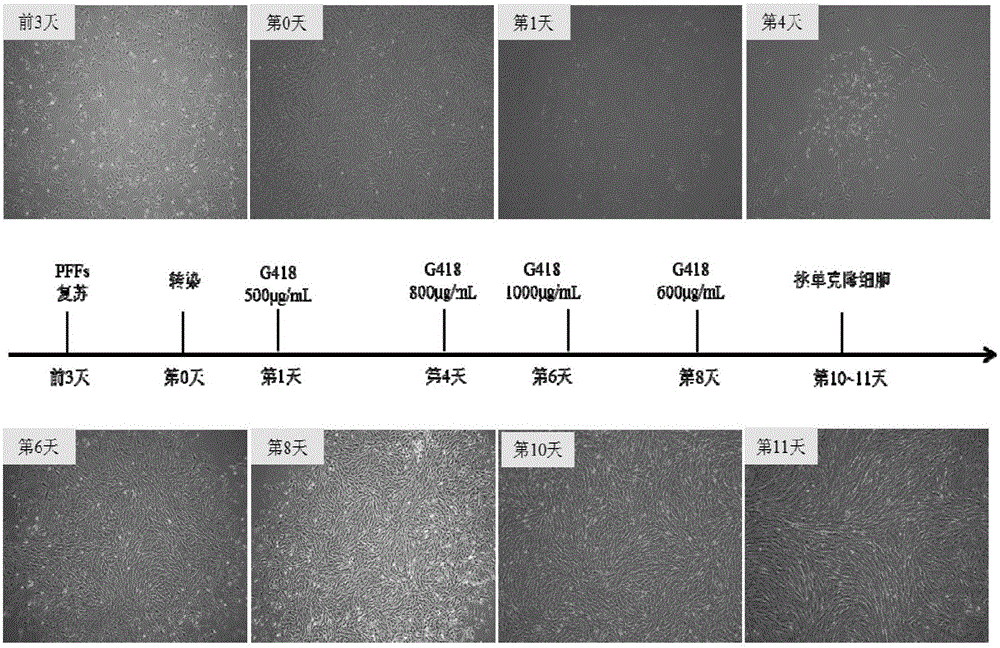Overexpression porcine co-stimulatory 4-1BB vector and application thereof
A carrier and expression cassette technology, which is applied in the field of preparation of 4-1BB transgenic pigs, can solve the problems of loss of function, gene frameshift mutation, etc., and achieve the effects of enhanced effect function, low cost and shortened time
- Summary
- Abstract
- Description
- Claims
- Application Information
AI Technical Summary
Problems solved by technology
Method used
Image
Examples
Embodiment 14-1BB
[0044] Construction of embodiment 14-1BB homologous recombination vector
[0045] The step of constructing the 4-1BB homologous recombination vector includes using the target biological genome as a template, PCR amplifying the left and right homology arms, the 4-1BB regulatory sequence, and the embryonic period specific regulatory element OCT4. The homologous left arm, 4-1BB expression frame, Cre containing LoxP site, Neo expression frame, homologous right arm, and negative selection DTA were sequentially connected to form the 4-1BB homologous recombination vector p4BOCNDR. The specific construction process is as follows:
[0046] The Yorkshire pig ear tissue with excellent production performance was taken, and a porcine fibroblast cell line was established by tissue block inoculation method, named YKX001, and conventional cell passage and cryopreservation. For detailed methods of cell culture, subculture and cryopreservation, please refer to "Refined Cell Biology Experiment ...
Embodiment 2
[0055] Example 2 Construction of CRISPR / Cas9 Targeting Vector
[0056] According to the CRISPR target sequence design website (http: / / crispr.genome-engineering.org / ), the target site of the first intron of porcine rosa26 site was predicted and analyzed. Select a sequence with the highest score from the candidate target sites and name it target1. Its sequence and reverse complementary sequence are TCCAGTCCCAGACATAGCAT (SEQ ID NO. 21) and ATGCTATGTCTGGGACTGGA (SEQ ID NO. 22) respectively, and complementary paired oligonucleotides are synthesized respectively. As shown in Table 1, the underlines are restriction sites.
[0057] Table 1 Oligonucleotide sequence
[0058]
[0059] Dilute the synthesized pair of oligonucleotide sequences to 100 μM, take 1 μL of 10 μL reaction system, add 10×PCR buffer, mix well, anneal, 94°C, 5min; 37°C, 10min; 4°C, 5min. The obtained annealed product can be connected with the backbone of pX330 digested with BbsI. For routine transformation met...
Embodiment 34-1B
[0063] Example 34- Preparation and identification of 1BB transgenic cell line
[0064] The Yorkshire pig skin fibroblast cell line with male sex and 50-day gestational age was selected, and the cell recovery, culture and subculture were referred to "Guidelines for Cell Biology Experiments" (J.S. Boniface et al., translated by Zhang Jingbo, et al. 2007, Science Press). When the cells grow confluent to about 80%, digest and collect the cells (about 1×10 6 ), add 2 μg of each of the vectors constructed in Examples 1 and 2 and 100 μL of Nucleofector reagent, mix well, add to the electric shock cup, and perform electric shock transfection with the A-024 program. Then inoculated into 10cm Petri dish at 1:20, 37.5°C, 5% CO 2cultured in an incubator. After 24 hours, the complete medium (10% FBS+DMEM) containing 500 μg / mL G418 was replaced, and the medium was changed every 3 to 4 days, and the concentration of G418 increased to 800 μg / mL after 96 hours. The formation of colony spot...
PUM
 Login to View More
Login to View More Abstract
Description
Claims
Application Information
 Login to View More
Login to View More - R&D Engineer
- R&D Manager
- IP Professional
- Industry Leading Data Capabilities
- Powerful AI technology
- Patent DNA Extraction
Browse by: Latest US Patents, China's latest patents, Technical Efficacy Thesaurus, Application Domain, Technology Topic, Popular Technical Reports.
© 2024 PatSnap. All rights reserved.Legal|Privacy policy|Modern Slavery Act Transparency Statement|Sitemap|About US| Contact US: help@patsnap.com










